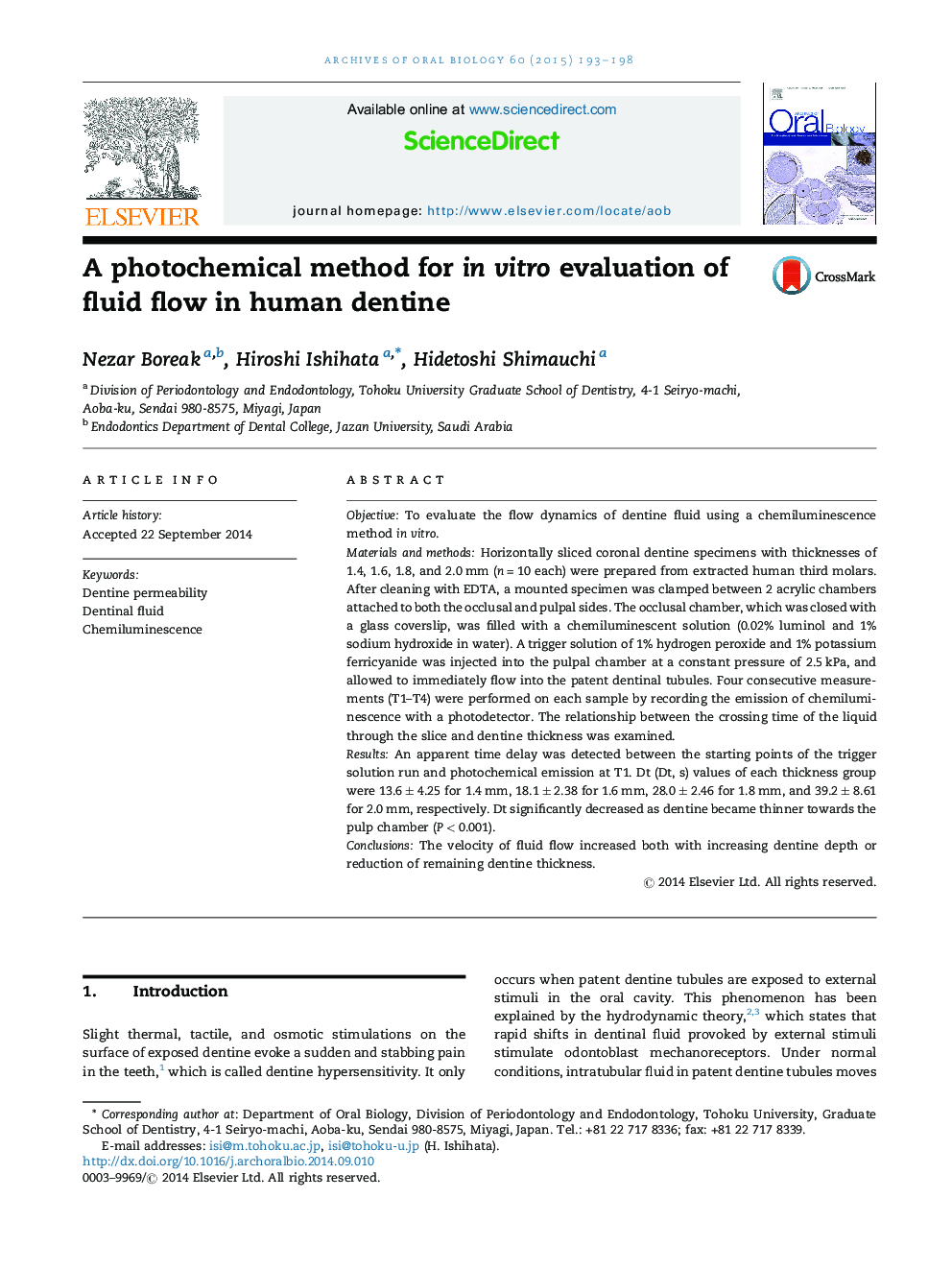| کد مقاله | کد نشریه | سال انتشار | مقاله انگلیسی | نسخه تمام متن |
|---|---|---|---|---|
| 3120856 | 1583304 | 2015 | 6 صفحه PDF | دانلود رایگان |
• Measurement of dentine permeability in the different thicknesses using a chemiluminescence method.
• Tracing flow to identify travel time of liquid through dentine tubules.
• Proportional relationship between dentine thickness and travelling time of the liquid.
• Positive correlation between velocity of liquid flow and permeability of dentine.
ObjectiveTo evaluate the flow dynamics of dentine fluid using a chemiluminescence method in vitro.Materials and methodsHorizontally sliced coronal dentine specimens with thicknesses of 1.4, 1.6, 1.8, and 2.0 mm (n = 10 each) were prepared from extracted human third molars. After cleaning with EDTA, a mounted specimen was clamped between 2 acrylic chambers attached to both the occlusal and pulpal sides. The occlusal chamber, which was closed with a glass coverslip, was filled with a chemiluminescent solution (0.02% luminol and 1% sodium hydroxide in water). A trigger solution of 1% hydrogen peroxide and 1% potassium ferricyanide was injected into the pulpal chamber at a constant pressure of 2.5 kPa, and allowed to immediately flow into the patent dentinal tubules. Four consecutive measurements (T1–T4) were performed on each sample by recording the emission of chemiluminescence with a photodetector. The relationship between the crossing time of the liquid through the slice and dentine thickness was examined.ResultsAn apparent time delay was detected between the starting points of the trigger solution run and photochemical emission at T1. Dt (Dt, s) values of each thickness group were 13.6 ± 4.25 for 1.4 mm, 18.1 ± 2.38 for 1.6 mm, 28.0 ± 2.46 for 1.8 mm, and 39.2 ± 8.61 for 2.0 mm, respectively. Dt significantly decreased as dentine became thinner towards the pulp chamber (P < 0.001).ConclusionsThe velocity of fluid flow increased both with increasing dentine depth or reduction of remaining dentine thickness.
Journal: Archives of Oral Biology - Volume 60, Issue 1, January 2015, Pages 193–198
